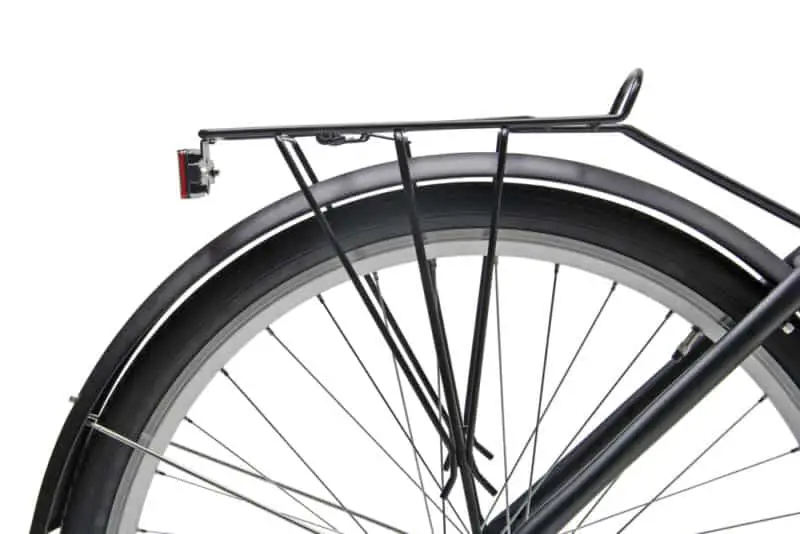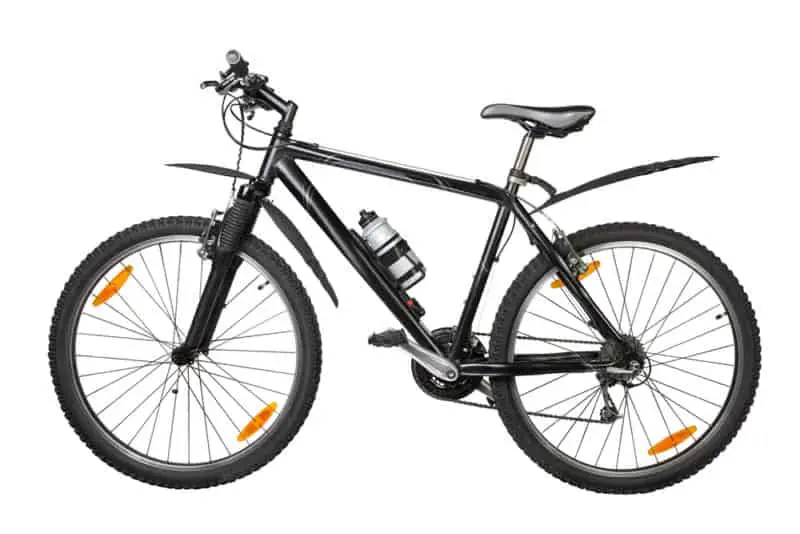If you’re a rider who prioritizes speed above all else, your bike’s weight is most likely a constant concern. You want it to be as light and fast as possible, and don’t mind sacrificing in other areas to make it happen.
So bike fenders or mudguards are the first thing to go, because they slow you down…right?
Bike fenders and mudguards can potentially increase your speed! They do so by reducing the effect of wind resistance (or drag) on your bike. Their smooth design helps wind deflect over and around your tires, creating a more aerodynamic profile.
So it seems your bike fenders don’t slow you down after all. Does this mean you should go out and buy some to set a new personal speed record?
Read on to find out just how big of an effect bike fenders may have on your speed.
How Much Fenders Affect Bike Speed
In a 2019 article published in the SAE Mobilus journal of engineering, researchers sought to understand how bike fenders affected (or didn’t affect) aerodynamics and speed overall.
Multiple types of fenders were used that provided various levels of wheel coverage: from 60 up to 270 degrees around the wheel’s circumference. Predictive models were created with these fender angles at bike velocities of 6, 8 and 10 meters per second (m/s).
What did the researchers discover?

As fender coverage increased (meaning more of the wheel’s circumference was protected by the fender), the amount of aerodynamic drag acting on the bike was reduced.
Interestingly, drag reduction peaked at 135 degrees of coverage, and then began to increase as coverage increased past 135 degrees. Unfortunately the article doesn’t go into why that is…
Overall, the optimal 135 degree fender coverage angle reduced drag by 4.6%, 4.5% and 4.6% at 6m/s, 8m/s and 10m/s respectively, as compared to bicycles without fenders.
Confused? Let me clear things up a bit.
Drag is the force of air acting opposite to the motion of an object (in this case, your bike). Imagine the difference between pedaling on a calm day vs. on a day when a strong wind is blowing right into your face. The less drag acting on your bike, the easier it will be to pedal to gain and maintain speed.
4.6% may not seem like a lot…and in some cases, it’s not. But the windier the day becomes, the more significant a 4.6% change becomes.
And if speed and efficiency is your primary concern, any reduction in drag is welcome!
Why Fenders Affect Bike Speed
The added weight of bike fenders doesn’t appear to make you slower, but why does it help you ride faster?
It’s all to do with aerodynamics.

More Aerodynamic Shape
An object’s shape will determine the degree to which air acts upon it. Picture an airplane’s wings. They’re designed to slice right through the air. Now imagine if the wings were shaped like rectangles. In this case, there would be more wing surface area for the air to act upon, and the plane wouldn’t be able to travel as fast.
You can feel this difference yourself next time you take a drive. We’ve all probably put our hand out the car window and noticed how when we turn our palm down to the ground, it cuts effortlessly through the air, but turn your palm forward and the air slams hard into your hand.
Less surface area means less area for air to act upon and slow you down.
Now let’s apply this to your bike tires. Mountain bike tires are big, chunky and covered in knobs…great for traction, not so great for aerodynamics. Even road tires, while much more streamlined than mountain bike tires, have grooves in them that can catch the air.
Increased surface area means more drag.
So how can we reduce drag on your tires?
By fitting them with fenders!
Bike fenders give your tires a more streamlined shape, which allows air to flow past them more easily. Less wind resistance means you can ride faster and expend less energy doing it. That’s why professional cyclists will ride right behind other cyclists (called drafting) during a competition: they conserve energy while minimizing wind resistance!
More Aerodynamic Surface
Surface material also plays an important role in the effect of wind resistance on your riding performance.
Tires are made of grippy rubber, which is great for grabbing onto the road or trail. The issue is it also “grabs” the air passing by.
This rubber compound doesn’t let air flow over and around the tires as easily as if they were made of a smoother material, like aluminum.
Sure, aluminum tires would be ridiculous, but you get my point.
So if we can’t change the material tires are made out of, the next best thing would be to cover them with a different material.
Like a smooth plastic or metal fender.
Bike fenders, even cheap ones, are designed to be as smooth and snag-free as possible. This enables them to deflect and cut through air much easier than a rotating rubber tire.
Do Fenders Make Your Bike FEEL Slow?
The above study has provided evidence to show bike fenders might actually make you go faster.
But will fenders make you FEEL faster, or does their added weight make you feel slower?
While perception of speed will vary from person to person, putting fenders on your bike probably won’t make it feel much different one way or the other. That 4.6% reduction in drag could be significant at higher speeds, but for the average rider, it’s unlikely to have a noticeable effect on your rides.
But again, if you’re a rider who prioritizes improving your Strava times, a one second reduction in lap time won’t feel any different in the saddle…but it’s still worth it!
Are Bike Fenders Worth It?
For an in-depth look at the pros and cons of bike fenders and whether YOU should buy them, check out our previous article, Are Bike Fenders Necessary?
But here’s a brief overview.
Decreasing drag is a nice bonus, but most people would say it isn’t the main benefit of a bike fender. A fender’s primary job is to protect you and your bike from water, dirt, rocks and any other debris you might find on the road or trail.
As your tires rotate, they tend to pick up anything they run over and throw it right up at you and your bike. This debris can scratch, scuff or damage your bike, which can be infuriating (the first ding on your new bike is always the worst!)
You’re also right in the line of fire. A stray rock can really do some damage, especially if it hits you in the face…which just happens to be directly above the front tire kicking up all that debris. Even a small pebble or bit of dirt can become problematic if it hits you in the eye (just one of many reasons to wear riding glasses or goggles).
Fenders also do a decent job of keeping you and your bike clean. They trap all that debris and send it right back down to the ground before it can reach you.
Generally, fenders are inexpensive: you can find most for under $100, with many being less than $50. That’s not a huge investment for something that provides quite a few benefits…including potentially making you go faster!
